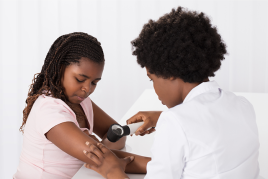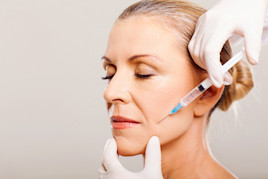What’s the difference between eczema and psoriasis?
What’s the difference between eczema and psoriasis?
Amy Paller, MD, FAAD, a dermatologist, talks about the differences between these two diseases.
What's the difference between eczema and psoriasis?
Children get eczema. They can also get psoriasis.
While more children develop eczema than psoriasis, almost 1% of children have psoriasis.
It’s not always easy to tell whether a child has eczema or psoriasis. A study conducted in Australia found that most children who had psoriasis were initially diagnosed by their primary care doctor as having another disease, often eczema.
To a dermatologist’s trained eye, psoriasis and eczema tend to look quite different.
Learning the differences between eczema and psoriasis
Psoriasis causes well-defined, thick, red, scaly patches, commonly in areas like the elbows and knees. It is common to see psoriasis on the face, buttocks, and scalp of a child. You’ll also commonly see thick patches of skin with overlying redness.
Eczema tends to appear in the crooks of the knees and the elbows.
Children who have psoriasis tend to have mild itching. In eczema, the itching can be intense.
There are many ways for a dermatologist to tell the difference between eczema and psoriasis, including what one sees on the skin, the amount of itch, and where the disease appears on the skin.
There can be overlap between eczema and psoriasis
Still in some children, it’s hard to tell the difference. In this case, a dermatologist might diagnose the child with “psoriasiform dermatitis.”
Sometimes, a child has both eczema and psoriasis, so there can be some overlap.
A dermatologist, however, will generally be able to differentiate between these two relatively common skin disorders.
 Molluscum contagiosum: How to safely treat it
Molluscum contagiosum: How to safely treat it
 Biosimilars: 14 FAQs
Biosimilars: 14 FAQs
 Practice Safe Sun
Practice Safe Sun
 Relieve uncontrollably itchy skin
Relieve uncontrollably itchy skin
 Fade dark spots
Fade dark spots
 Untreatable razor bumps or acne?
Untreatable razor bumps or acne?
 Laser hair removal
Laser hair removal
 Scar treatment
Scar treatment
 Botox
Botox
 Free materials to help raise skin cancer awareness
Free materials to help raise skin cancer awareness
 Dermatologist-approved lesson plans, activities you can use
Dermatologist-approved lesson plans, activities you can use
 Find a Dermatologist
Find a Dermatologist
 What is a dermatologist?
What is a dermatologist?